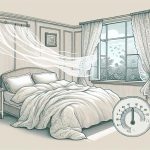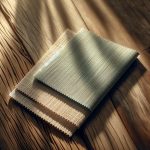When planning your next outdoor adventure, the choice of fabric can make a significant difference in your comfort and performance. Non-plastic based fabrics like bamboo, hemp, and Tencel offer unique benefits that enhance your experience while being environmentally friendly. Each material has its distinct advantages, from moisture-wicking properties to durability. Curious about which fabric might be best suited for your needs? Let’s explore the top contenders for your outdoor gear.
Table of Contents
Key Takeaways
- Bamboo Fabric offers excellent moisture-wicking and breathability, keeping you comfortable during hot and humid outdoor activities.
- Hemp Fabric is highly durable, naturally resistant to mold and UV rays, making it ideal for rugged outdoor environments.
- Tencel (Lyocell) provides unmatched comfort and breathability, effectively managing sweat while being sustainably sourced from wood pulp.
- Linen (Flax) is lightweight and quick-drying, ensuring comfort during movement and efficient moisture management in warm weather.
- Non-plastic fabrics enhance sustainability by being biodegradable, reducing environmental impact while providing comfort and performance during outdoor adventures.
The Benefits of Choosing Non-Plastic Fabrics for Outdoor Activities
When you choose non-plastic fabrics for outdoor activities, you not only enhance your comfort but also contribute to a healthier environment.
These fabrics, like cotton, linen, and wool, breathe better than synthetics, keeping you cool and dry during your adventures. They’re often more durable and can withstand the wear and tear of various outdoor conditions.
Natural fabrics like cotton, linen, and wool outperform synthetics, providing breathability and durability for all your outdoor adventures.
Additionally, non-plastic materials are biodegradable, so they won’t linger in landfills for centuries after you’re done using them. By opting for these alternatives, you reduce your carbon footprint and support sustainable practices.
Plus, many non-plastic fabrics are hypoallergenic, making them gentler on your skin during those long hikes or camping trips.
Embracing these choices truly elevates your outdoor experiences.
Bamboo Fabric: The Moisture-Wicking Champion
Bamboo fabric stands out as a top choice for outdoor enthusiasts looking for effective moisture-wicking properties. Its natural fibers excel at drawing moisture away from your skin, keeping you dry and comfortable during your adventures.
When you sweat, bamboo’s absorbent qualities work to pull that moisture away, allowing it to evaporate quickly. This feature helps regulate your body temperature, making it ideal for both hot and humid conditions.
Plus, bamboo fabric’s soft texture feels great against your skin, reducing irritation during long treks. It’s also breathable, ensuring you won’t overheat.
If you’re seeking a sustainable option that performs well under pressure, bamboo fabric is a fantastic choice for your outdoor wardrobe. Embrace the comfort and functionality it offers!
Hemp Fabric: Strength and Durability for Extreme Conditions
Hemp fabric is a powerhouse choice for outdoor adventurers seeking strength and durability in extreme conditions. Its natural resistance to mold, UV rays, and abrasion makes it ideal for rugged use. Plus, hemp’s breathability keeps you comfortable during intense activities.
Here’s a quick comparison of hemp fabric’s key features:
| Feature | Benefit | Notes |
|---|---|---|
| Strength | Highly durable | Withstands wear and tear |
| Moisture Wicking | Keeps you dry | Absorbs sweat efficiently |
| Eco-Friendly | Sustainable choice | Grows quickly with minimal resources |
| UV Resistant | Protects against sun damage | Ideal for sunny conditions |
Choosing hemp fabric guarantees you’re equipped with reliable gear that stands up to the challenges of your adventures. Experience the benefits of hemp on your next outdoor journey!
Tencel (Lyocell): A Breathable Option for Comfort
Tencel, also known as Lyocell, stands out as an exceptional fabric for outdoor adventures due to its remarkable breathability and comfort.
Tencel, or Lyocell, offers unmatched breathability and comfort, making it an ideal choice for outdoor adventures.
This fiber is perfect for those long hikes or camping trips where you need to stay cool and dry. Its moisture-wicking properties help manage sweat, keeping you comfortable throughout your activities.
Here are some key features of Tencel:
- Eco-friendly: Made from sustainably sourced wood pulp, it’s biodegradable and reduces environmental impact.
- Soft and smooth: The fabric feels gentle against your skin, minimizing irritation during outdoor activities.
- Durable: Tencel resists wrinkles and holds up well against wear and tear, making it a reliable choice for adventurous outings.
With Tencel, you can enjoy the great outdoors without sacrificing comfort.
Organic Cotton: Softness Meets Sustainability
When you’re seeking comfort and sustainability for your outdoor adventures, organic cotton is an excellent choice. This soft, breathable fabric not only feels great against your skin, but it’s also produced without harmful pesticides or synthetic fertilizers, making it a healthier option for you and the environment.
You can enjoy its natural moisture-wicking properties, which help keep you dry during physical activities. Plus, organic cotton is durable, ensuring that your gear lasts through many adventures.
Whether you’re hiking, camping, or simply lounging outdoors, this fabric provides the softness you crave without compromising on eco-friendliness. By choosing organic cotton, you’re not just investing in comfort; you’re supporting sustainable farming practices that benefit our planet.
Linen (Flax): Natural Cooling for Warm Weather Adventures
When you’re out in the sun, linen is your go-to fabric for staying cool and comfortable.
Its breathability helps manage moisture, so you won’t feel sticky or overheated during your adventures.
Plus, linen comes from sustainably grown flax, making it a smart choice for both you and the planet.
Breathability and Comfort
Linen, derived from the flax plant, offers exceptional breathability and comfort, making it an ideal choice for warm weather adventures.
When you wear linen, you’ll appreciate its lightweight and airy nature, perfect for staying cool during those hot days outdoors. You’ll find that linen’s unique weave allows for superior airflow, keeping you comfortable as you explore.
Consider these benefits of linen for your next adventure:
- Moisture-wicking: Linen absorbs sweat without feeling damp, helping you stay dry.
- Quick-drying: If you get caught in a surprise rain shower, linen dries faster than many other fabrics.
- Softens with use: The more you wear it, the softer and more comfortable it becomes.
Embrace linen for your warm weather escapades!
Moisture Management Benefits
Moisture management is essential for staying comfortable during outdoor activities, and linen excels in this area.
When you’re hiking, camping, or enjoying a day at the beach, you want a fabric that wicks away sweat and dries quickly. Linen’s natural fibers absorb moisture, helping you stay cool when the temperatures rise.
Unlike synthetic materials, linen allows air to circulate, reducing that sticky, uncomfortable feeling as you move. This breathability lets your skin breathe, which is vital during high-energy activities.
Plus, linen’s lightweight nature means it won’t weigh you down.
Sustainable Cultivation Practices
Choosing linen not only benefits your comfort during outdoor adventures but also supports sustainable cultivation practices.
The flax plant, from which linen is made, requires considerably fewer resources compared to other crops. By opting for linen, you’re contributing to eco-friendly farming methods that preserve the environment.
- Minimal Water Use: Flax needs less irrigation than cotton, making it a more water-efficient option.
- Crop Rotation Benefits: Flax can improve soil health by breaking pest cycles and enhancing nutrient levels, promoting biodiversity.
- Biodegradable: Linen is fully biodegradable, ensuring it won’t contribute to landfill waste like synthetic fabrics.
Comparing Natural Fabrics With Recycled Materials for Outdoor Gear
When choosing outdoor gear, you’ll want to contemplate how natural fabrics stack up against recycled materials regarding breathability and moisture management.
You’ll also notice differences in durability and longevity, which can impact your adventures.
Finally, think about the environmental effects of each option as you make your decision.
Breathability and Moisture Management
As you gear up for your next outdoor adventure, understanding the differences in breathability and moisture management between natural fabrics and recycled materials can greatly enhance your experience.
Natural fabrics like cotton and wool excel in breathability, allowing sweat to evaporate quickly, keeping you comfortable. On the other hand, recycled materials often offer moisture-wicking properties that draw sweat away from your skin.
Here’s a quick comparison:
- Natural Fabrics: Great for temperature regulation and comfort.
- Recycled Materials: Often engineered for enhanced moisture management.
- Hybrid Options: Combine the best of both worlds for versatility.
Choosing the right fabric will keep you dry and comfortable, letting you focus on enjoying the great outdoors.
Durability and Longevity Differences
While both natural fabrics and recycled materials have their merits, understanding their durability and longevity can greatly impact your outdoor gear choices.
Natural fabrics like hemp and organic cotton offer impressive strength and resistance to wear, making them suitable for rugged adventures. However, they may take longer to dry and can be susceptible to mold if not cared for properly.
On the other hand, recycled materials, such as recycled polyester, often boast enhanced durability due to their synthetic nature. They resist fading and hold up well against the elements, ensuring that your gear lasts through countless trips.
Ultimately, think about the specific conditions you’ll face and how long you want your gear to last when deciding between these two options.
Environmental Impact Considerations
Considering the environmental impact of your outdoor gear choices is essential, especially when comparing natural fabrics to recycled materials.
Both options have their pros and cons, but understanding their implications can guide your decision.
– Natural Fabrics: Often biodegradable and derived from renewable resources, they reduce dependency on fossil fuels.
However, some farming practices can lead to deforestation and pesticide use.
– Recycled Materials: These fabrics help divert waste from landfills and reduce resource consumption.
Still, their production can involve energy-intensive processes and chemical treatments.
Ultimately, think about your priorities.
If sustainability is your main concern, weigh the benefits of each fabric type carefully to make an informed choice that aligns with your outdoor adventures and environmental values.
Frequently Asked Questions
How Do I Choose the Right Fabric for My Outdoor Activity?
Did you know that 70% of outdoor enthusiasts prioritize fabric breathability? When choosing the right fabric for your activity, consider moisture-wicking properties, durability, and weather resistance to guarantee comfort and performance during your adventures.
Are Natural Fabrics More Expensive Than Synthetic Options?
Natural fabrics often cost more than synthetic options due to their sourcing and processing. However, investing in quality materials can enhance your comfort and performance, making them worthwhile for your outdoor activities.
Can I Dye Natural Fabrics Without Harming Their Sustainability?
Yes, you can dye natural fabrics sustainably! Use plant-based dyes or eco-friendly dyes, and follow proper techniques to minimize environmental impact. You’ll enhance your fabric’s uniqueness without compromising its eco-friendliness. Enjoy your creative process!
What Is the Lifespan of Non-Plastic Outdoor Fabrics?
Oh, the lifespan of non-plastic outdoor fabrics? They might just outlive your enthusiasm for hiking! Typically, you’re looking at five to ten years, depending on care and exposure. Treat them well, and they’ll last longer!
How Do I Properly Store Natural Fiber Outdoor Gear?
To properly store your natural fiber outdoor gear, clean it thoroughly, make certain it’s completely dry, and keep it in a cool, dark place. Avoid damp areas to prevent mold and maintain its durability for future adventures.
- A Review of Mulberry Home’s “Game Birds” Fabric Collection - June 21, 2025
- What You Need to Know About Buying Mulberry Silk Fabric in India - June 21, 2025
- Styling Your Home With Mulberry Plaid and Tartan Fabrics - June 21, 2025






